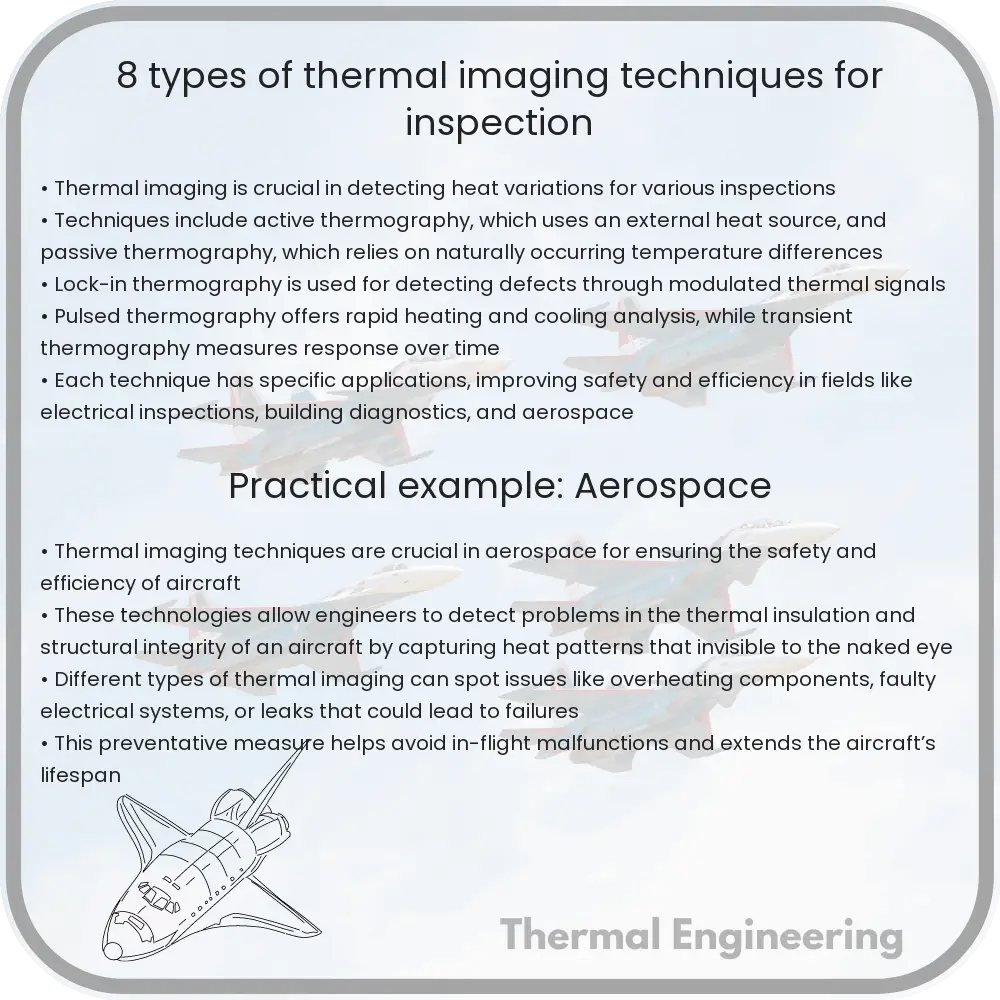Learn about eight types of thermal imaging techniques used for effective inspection across various industries, including infrared thermography and cooled detectors.

Understanding Thermal Imaging Techniques for Inspection
Thermal imaging, a technique that detects heat emitted by objects to create an image assembled from that data, is invaluable across various industries for inspection and monitoring purposes. This technology helps in identifying abnormal temperatures in mechanical equipment, electrical systems, and buildings, which are indicative of potential problems. Here are eight key types of thermal imaging techniques used for effective inspection:
1. Infrared Thermography
Infrared thermography is the most common thermal imaging technique. It involves the detection and measurement of infrared energy emitted from an object, converting it into a visible image that represents the temperature variations across the object’s surface.
2. Cooled Infrared Detectors
Cooled infrared detectors are highly sensitive imaging systems that require the detector elements to be cooled to low temperatures, often below 0°F (-18°C). This cooling significantly enhances their resolution and sensitivity, making them ideal for detecting very subtle differences in thermal radiation.
3. Uncooled Infrared Detectors
Contrary to cooled infrared detectors, uncooled detectors operate at ambient temperatures. These devices are simpler and more cost-effective while being sufficiently effective for a wide range of applications, such as building inspections, industrial maintenance, and security monitoring.
4. Active Thermography
Active thermography introduces an external energy source to induce thermal contrast. This technique can be particularly useful for materials inspection, subsurface defect detection, and composite evaluation. Sources of energy used include optical flash lamps, heaters, or ultrasound, which generate thermal responses that are then captured by infrared cameras.
5. Passive Thermography
Passive thermography relies solely on naturally occurring thermal energy from the inspected object itself, without any external stimulation. This method is commonly used in scenarios where the natural state of the object can provide sufficient thermal contrast, such as human body temperature screening.
6. Lock-in Thermography
Lock-in thermography is a variant of active thermography where a periodic thermal excitation (like a pulsing heat source) is applied to an object. The thermal camera measures the phase shift and amplitude of the object’s thermal response, which can indicate defects or material variations not visible to other imaging techniques.
7. Pulse Thermography
Pulse thermography involves heating the object’s surface with a short, high-energy pulse and observing the cooling process using an infrared camera. This method is effective in detecting features like corrosion, delamination, or other flaws in materials by examining the heat flow characteristics.
8. Flash Thermography
Flash thermography is a sub-type of pulse thermography where a flash lamp is used to deliver a short burst of energy to the surface of an object. The subsequent thermal patterns are analyzed to identify abnormalities.
Each of these thermal imaging techniques offers unique advantages based on the specific requirements of the inspection task. The choice of method can vary based on factors such as sensitivity needs, target operating conditions, spatial resolution requirements, and cost constraints. Understanding these different techniques enables professionals to select the most appropriate method for maintaining equipment reliability, safety, and operational efficiency.